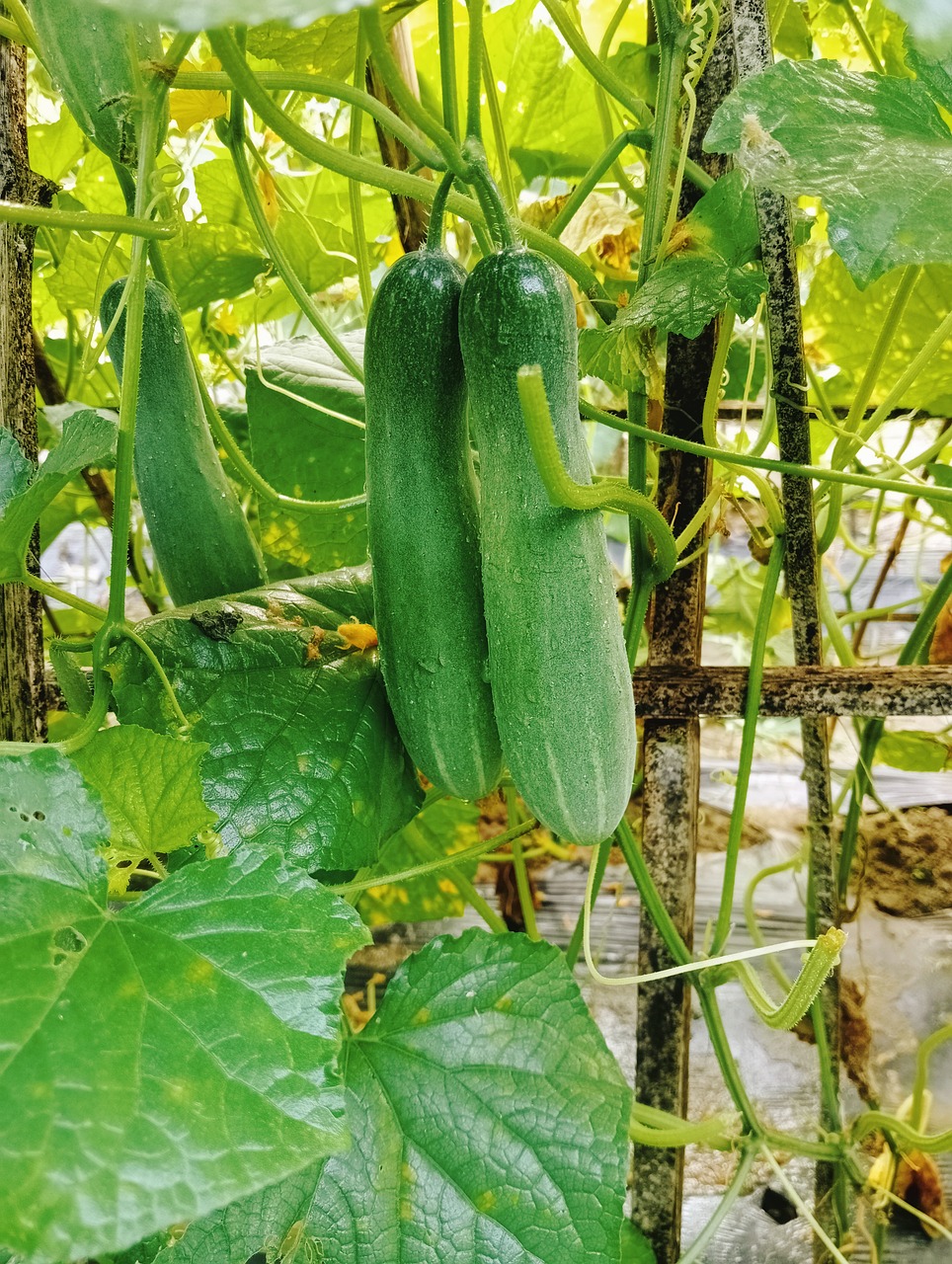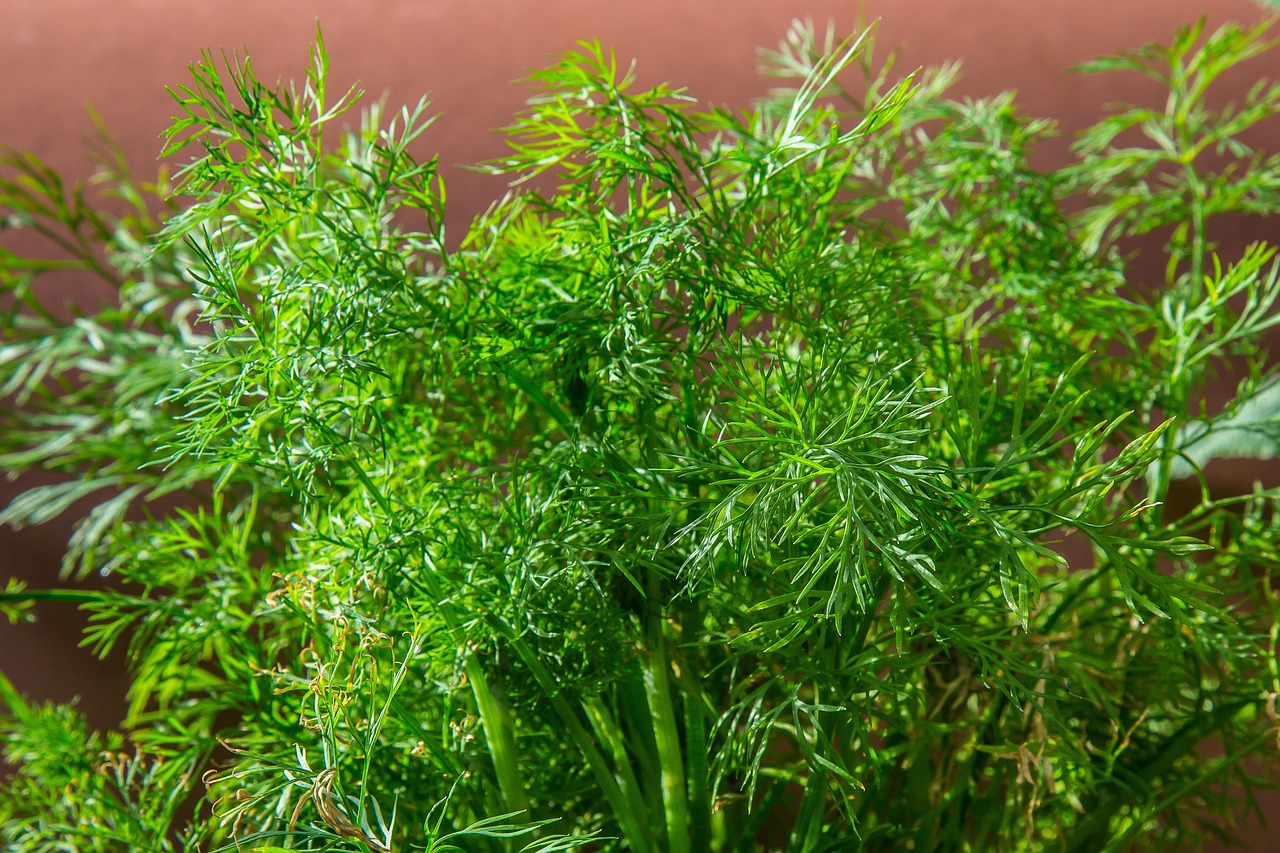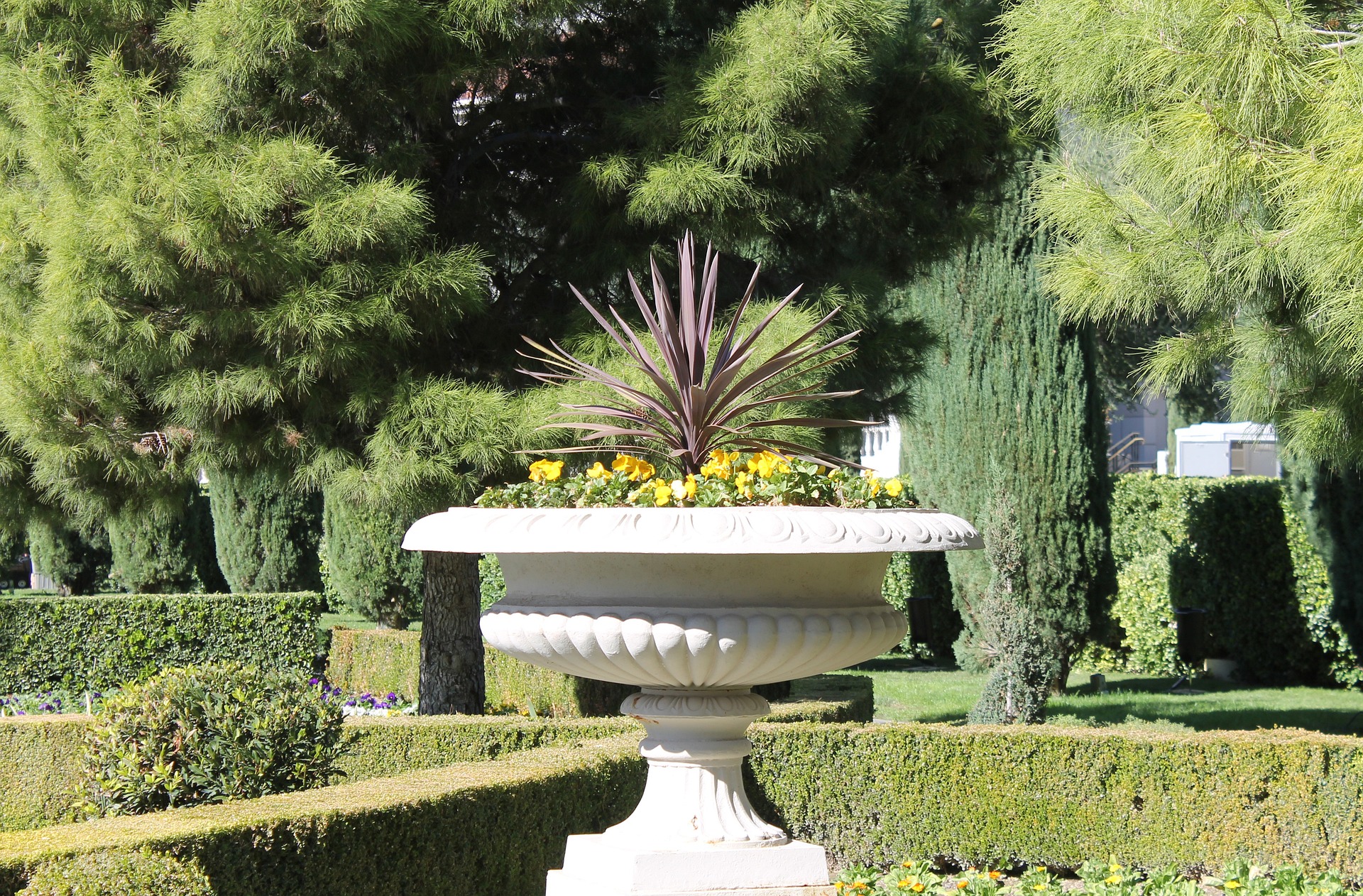Cucumbers are relatively easy to grow in a variety of climates, provided they receive ample sunlight, consistent watering, and well-drained soil. They are often grown in home gardens and are a popular choice for beginner gardeners.
Cucumbers have crisp texture, refreshing flavor, and versatility in culinary applications, which makes them a popular choice for both fresh consumption and cooking. Here’s a complete guide on how to grow the best cucumber plants:

Description
Cucumber (Cucumis sativus) is a widely cultivated annual creeping vine plant that belongs to the family Cucurbitaceae, which also includes cucumber’s look alike plant, the zucchini.
Cucumbers are typically grown for their fruits which are elongated, cylindrical, and usually green, although some varieties may be yellow or white. They have a smooth skin with longitudinal ridges or bumps and contain a moist, crunchy flesh with numerous small seeds embedded in the center. Plants produce leaves that are typically large, lobed, and deeply veined, with a rough texture and yellow, trumpet-shaped flowers.
Cucumbers are versatile vegetables that can be eaten raw or cooked, are low in calories and rich in vitamins and minerals, including vitamin K, vitamin C, potassium, and dietary fiber. They also contain antioxidants such as beta-carotene and flavonoids.
| Botanical name: Cucumis sativus | Propagation: Seeds |
| Common name: Cucumber | Soil type: Loam, Sandy loam |
| Family: Cucurbitaceae | Soil pH: 6.0-7.0 |
| Plant type: Annual | Temperature: 700F-900F |
| Hardiness zones: USDA zones 4-12 | Light: Full sun |
| Fruit size: 6-8in. long, 1-2in. wide | Spacing: 15 to 24 inches , 24-38inches |
| Flower color: Yellow | Pollination: Bees |
| Time to harvest: 50-70 days | Toxicity: Non toxic |
| Native area: Asia |
Common Cucumber varieties to Grow
Straight Eight: This is a traditional slicing cucumber known for its straight shape, smooth skin, and excellent flavor. It’s a reliable producer and adapts well to various growing conditions.
Burpless (Japanese): These cucumbers are known for their mild flavor and tender skin, making them easy to digest. They have thinner skins and fewer seeds than other varieties.
Lemon Cucumber: These small, round cucumbers have a bright yellow skin and a mild, slightly sweet flavor. They’re great for fresh eating and adding color to salads.
Divine: This is a high-yielding slicing cucumber with dark green, glossy skin and crisp flesh. It’s disease-resistant and produces uniform fruits over a long season.
National Pickling: A popular pickling cucumber with small, blocky fruits that are ideal for making pickles. It has a crisp texture and excellent flavor.
Temperature requirements
Cucumbers thrive in warm temperatures. The ideal daytime temperature range for cucumber plants is between 70°F (21°C) and 90°F (32°C). Night time temperatures should ideally remain above 60°F (15°C) to ensure proper growth and fruit development.
High temperatures, especially above 90°F (32°C), can adversely affect cucumber fruit set and quality. Temperatures exceeding this range can lead to poor pollination, reduced fruit size, and bitterness in the fruit.
Cucumbers are highly sensitive to frost. Temperatures below 50°F (10°C) can cause damage to the foliage and fruit. Frost can kill cucumber plants, so it’s crucial to plant them after the threat of frost has passed in the spring and harvest them before the first frost in the fall.
Soil requirements
Cucumbers prefer well-drained soil that allows excess water to drain away quickly. Soil that retains too much water can lead to root rot and other fungal diseases. Sandy loam or loamy soil with good drainage is ideal for cucumber cultivation.
The optimal soil pH for growing cucumbers is between 6.0 and 7.0. Slightly acidic to neutral soil pH provides the best conditions for nutrient availability and root development.
Cucumbers are heavy feeders and require fertile soil with ample nutrients for healthy growth and fruit production. Prior to planting, amend the soil with organic matter such as compost, well-rotted manure, or aged composted leaves to improve soil fertility and structure.
Light/Sun requirements
Cucumbers thrive in full sunlight, which means they need at least 6 to 8 hours of direct sunlight per day. In warmer climates, provide cucumber plants with some partial shade during the hottest part of the day.
When to plant Cucumbers
Plant cucumbers in spring after the last frost date in your area. You can directly seed them into the soil after the last frost date or you can can start seeds indoors about 3 to 4 weeks before the last expected frost date in your area and then transplant them outdoors once the weather warms up.
In warmer climate regions, cucumbers can be planted at any time of the year, but the best time to plant them is at the beginning of the rainy season so that they can benefit from the rains.
To extend the harvest period, consider planting cucumbers in successive batches every 2 to 3 weeks throughout the growing season. This staggered planting approach ensures a continuous supply of fresh cucumbers.
Garden preparation
Test the soil pH and nutrient levels using a soil testing kit. Cucumbers prefer slightly acidic to neutral soil with a pH between 6.0 and 7.0.
Amend the soil as needed based on the soil test results. Incorporate organic matter such as compost, well-rotted manure, or aged composted leaves to improve soil fertility, structure, and drainage.
Till the soil to a depth of 6 to 8 inches (15 to 20 cm) to loosen it and remove any weeds, rocks, or debris.
If your soil has poor drainage or is compacted, consider creating raised beds for planting cucumbers. Raised beds provide better drainage and soil aeration, which can benefit cucumber plants.
Cucumber plants benefit from vertical support to keep the vines off the ground, reduce disease risk, and promote better air circulation. Install trellises, stakes, or cages in the garden before planting to support the cucumber vines as they grow.
Planting Cucumber
Transplanting: If you started cucumber seeds indoors, transplant the seedlings outdoors once they have developed 2 to 3 true leaves and all risk of frost has passed.
Direct Seeding: Sow seeds directly into well-prepared soil after the last frost date. Plant seeds 1 inch (2.5 cm) deep and space them according to the recommended spacing for your cucumber variety.
Space bush cucumber plants 15 to 24 inches apart and vining varieties 24 to 38 in. apart in rows spaced 3ft. apart.
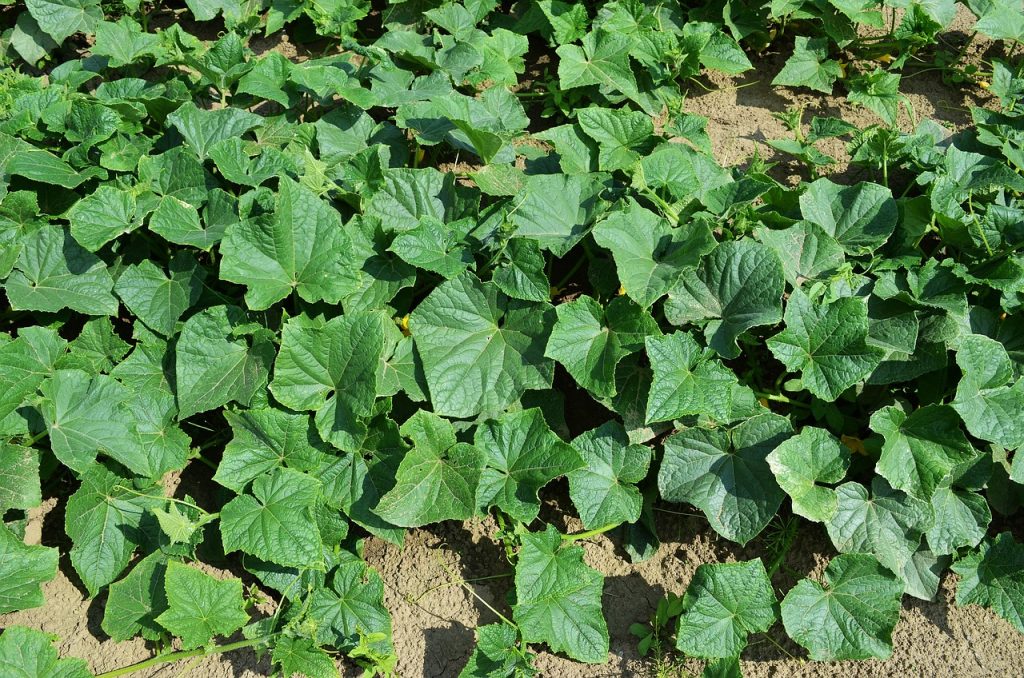
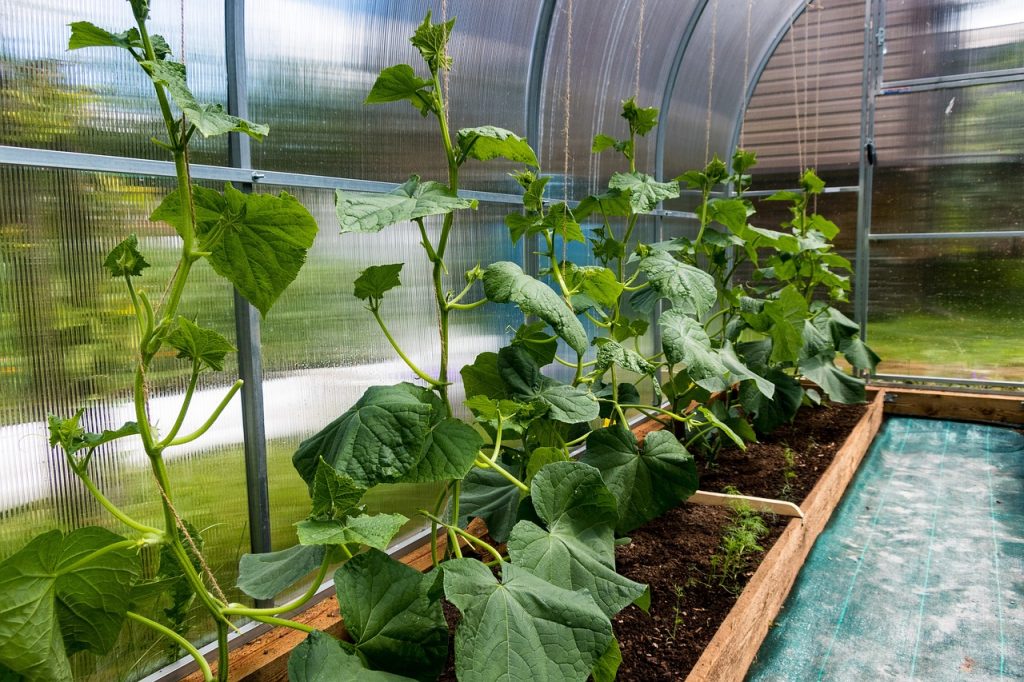
How to Care for Cucumber plants
Mulching: Apply a layer of organic mulch, such as straw, shredded leaves, or grass clippings, around cucumber plants to conserve moisture, suppress weeds, and maintain soil temperature. Mulching also helps improve soil structure as it decomposes.
Watering: Keep the soil consistently moist but not waterlogged throughout the growing season, especially during hot and dry periods. Water cucumbers at the base of the plants early in the morning to allow foliage to dry during the day and reduce disease risk.
Fertilizing: Apply a balanced fertilizer or compost tea to cucumber plants 3-4 weeks to provide essential nutrients for healthy growth and fruit production.
Harvesting and Storing Cucumbers
Cucumbers are typically ready for harvest 50 to 70 days after planting, depending on the variety.
Most cucumbers are harvested when they are still young and tender, before they become too large and develop tough skins with mature seeds. Regular harvesting encourages continued production.
Use scissors or garden shears to cut cucumbers from the vine rather than pulling them, which can damage the plants.
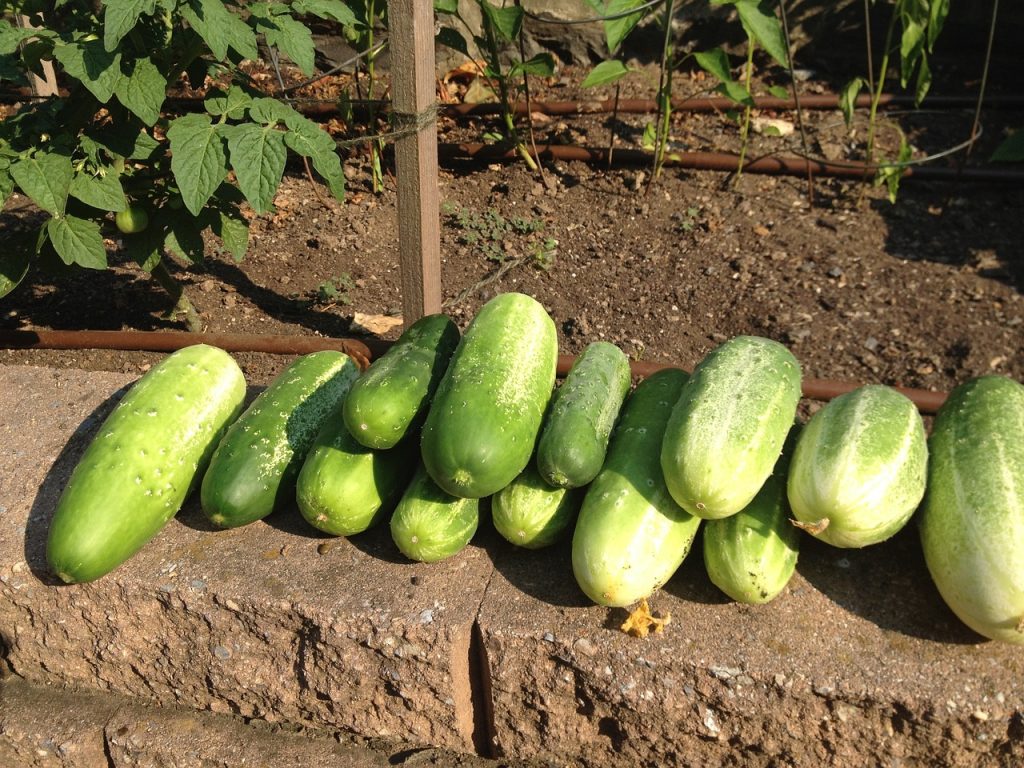
Storing Cucumbers
If you do not intend to use your cucumbers a few days after harvesting, you can pickle them or store them in the refrigerator, ideally in the vegetable crisper drawer or in a plastic bag to help maintain moisture.
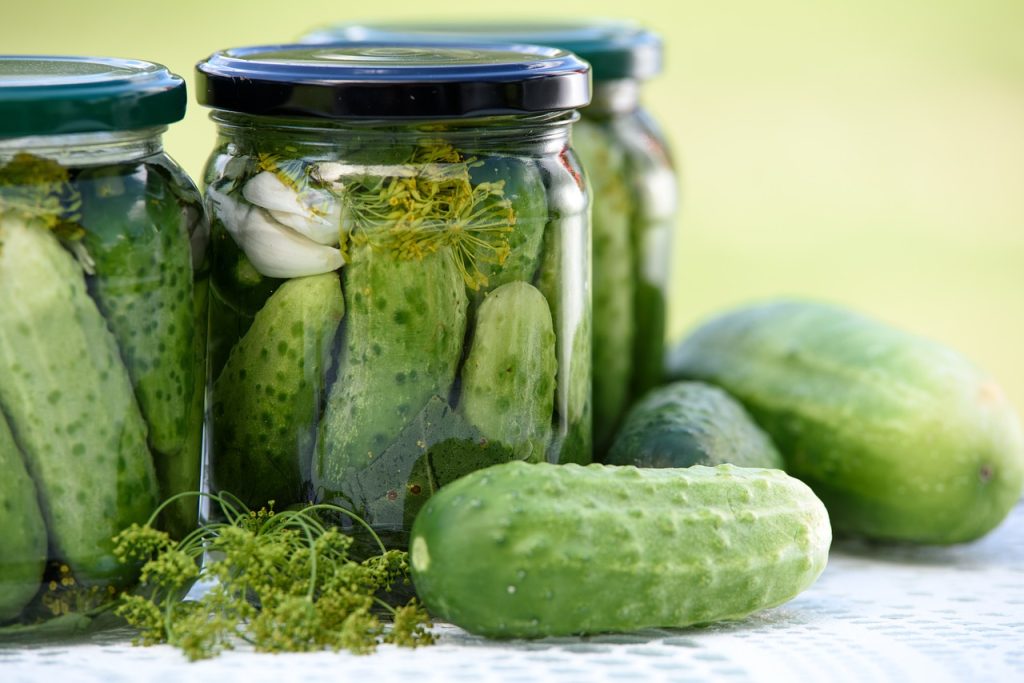
Pests and Diseases
Pest control: Keep an eye out for common cucumber pests such as cucumber beetles, aphids, and squash bugs. Handpick or use traps for larger pests and use insecticidal soap for smaller ones.
Prevent Diseases: Provide good air circulation by spacing plants adequately and avoiding overhead watering. Practice crop rotation to reduce the risk of soil-borne diseases.

